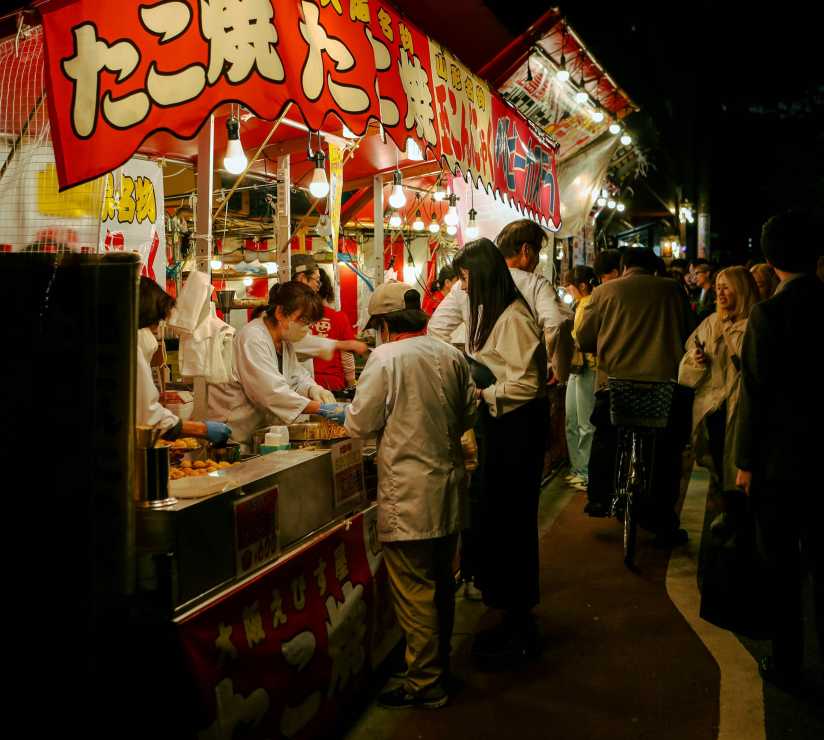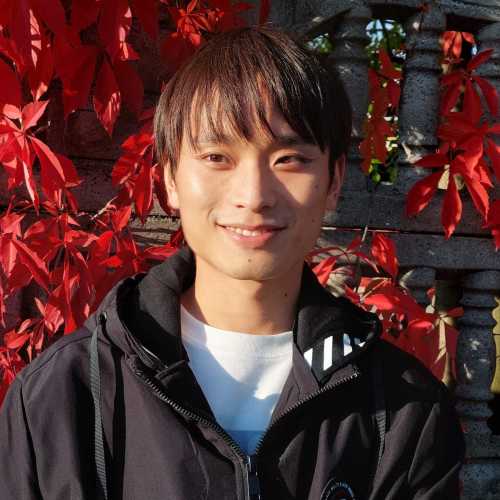Table Of Contents
- Introduction to Osaka's Food Scene
- Why Choose Osaka Food Tours with Local Guides
- Popular Osaka Food Tours
- Must-Try Dishes in Osaka
- Exploring Osaka's Food Districts
- Seasonal Specialties on Osaka Food Tours
- Cultural Etiquette on Osaka Food Tours
- The Best Time for Osaka Food Tours
- How to Choose the Right Osaka Food Tour
- What to Bring on Your Osaka Food Tour
- Planning Your Complete Osaka Food Journey
- Conclusion: The Lasting Impact of Osaka Food Tours
Introduction to Osaka's Food Scene
Osaka, often referred to as "Japan's Kitchen," stands as the undisputed culinary capital of Japan. For the intrepid traveller seeking authentic Japanese cuisine, Osaka food tours offer an unparalleled opportunity to dive into a gourmet paradise guided by knowledgeable locals.
The people of Osaka pride themselves on their extensive knowledge of good food, and their passion for eating has given rise to the local saying "kuidaore," which translates to "eat until you drop." This philosophy permeates every street corner and alleyway, where street stalls and restaurants serve up an astonishing variety of Japanese dishes.
What sets Osaka food apart is its accessibility and unpretentious approach. Street food in Osaka isn't just convenient, it's an art form perfected over generations, with recipes passed down through families who have operated the same stalls for decades.
Why Choose Osaka Food Tours with Local Guides
![A local guide shares the stories behind Osaka’s street foods with travelers.]()
In a city like Osaka,where street food stalls are woven into daily life, every bite tells a story. Having a local guide by your side turns a good meal into something unforgettable. It’s not just about what you’re eating, it’s about why it matters. Your host shares the cultural stories, historic facts, family traditions, and local quirks behind every dish.
Experiences Shaped Around You
With personalized tours, your day unfolds around your tastes, literally. Whether you’re a lifelong foodie or just curious about Japanese street snacks, your host can tailor the stops, the pace, and even the ingredients to suit your preferences or dietary needs. It’s your experience, your way. Whether you're up for a ten minute walk or an all day excursion, Osaka delivers.
More Than Just Food
Local hosts don’t just know what’s delicious, they know where the hidden gems are, often tucked down narrow alleys just a short walk from the crowds. And as you explore, you’ll hear stories about Osaka’s evolution as Japan’s kitchen: how post-war street stalls became institutions, or how certain dishes reflect the city’s down-to-earth, generous spirit.
Through a Local’s Eyes
Japanese Andy, a renowned Japanese language teacher, explains: "What visitors miss when exploring on their own is the story behind each dish. Every piece of takoyaki represents generations of perfecting techniques and flavors that are unique to this region controlled by distinct cultural influences."
When you explore with someone who lives and breathes the city, every flavor comes with a deeper connection. Other tours don't offer the same depth of local connection or flexibility to follow your curiosity.
Popular Osaka Food Tours
![Sampling iconic Osaka dishes ]()
Street Food, the Local Way
Osaka’s street food is legendary and the best way to experience it is elbow-to-elbow with a local who knows where to go, what to try, and how it’s meant to be eaten. You’ll likely explore iconic neighborhoods like Dotonbori or Shinsekai, tasting classics like sushi, takoyaki (crispy-on-the-outside octopus balls), okonomiyaki (savory pancakes), and kushikatsu (deep-fried skewers).
But it’s not just about the bites, it’s about what they mean. You’ll learn small but important details, like why there’s a strict no double-dipping rule at kushikatsu counters, and how these humble dishes helped Osaka earn its title as Japan’s street food capital. With 6–8 tastings, this experience is as satisfying as it is insightful.
Market-to-Table Moments
If you’re curious about what goes into Osaka’s famous dishes, a market-focused food experience offers a deeper dive. Strolling through Kuromon Ichiba Market, affectionately called “Osaka’s Kitchen,” you’ll uncover stalls brimming with fresh seafood, rare vegetables, and cooking tools you’ve never seen before.
Evening Eats & Izakaya Culture
When the sun sets, Osaka shifts gears. Evening private tours aren’t just about dinner—they’re about stepping into the social heart of the city. With a local by your side, you’ll slip into cozy izakayas, where after-work crowds sip beer and sake, sharing plates of fried goodness and laughter.
It’s here that Japanese hospitality, storytelling, and tradition meet. Some of these tucked-away spots still carry the vintage glow of the unique Taisho era, and with no menus in English, they’re places you’d probably never find (or enter) alone.
Looking for a private city experience in Osaka?
Explore the city with a local who plans a private day just for you; no groups, no scripts.
Must-Try Dishes in Osaka
![Freshly cooked takoyaki balls topped with savory sauce and bonito flakes]()
Takoyaki: Osaka's Signature Street Food
These spherical snacks represent the pinnacle of Osaka street food culture. Made from a wheat flour batter filled with octopus pieces, green onion, and pickled ginger, then cooked in special molded pans, takoyaki captures the essence of Osaka's approach to food, casual, flavorful, and deeply satisfying.
The best takoyaki balances a crispy exterior with a creamy, molten interior. Topped with takoyaki sauce (similar to Worcestershire but sweeter), mayonnaise, seaweed flakes, and bonito flakes that "dance" from the heat, this dish embodies the playful spirit of Osaka cuisine.
Okonomiyaki: The Savory Pancake
Often described as a Japanese savory pancake, okonomiyaki literally means "grilled as you like it," reflecting the customizable nature of this hearty dish. The Osaka variation mixes cabbage, green onion, meat or seafood into a batter that's grilled on a flat iron surface.
Many tours include visits to restaurants where guests cook their own okonomiyaki on built-in table grills. The dish is finished with a sweet-savory sauce, mayonnaise, seaweed, and bonito flakes, creating a complex flavor profile.
Kushikatsu: Deep-Fried Perfection
This dish showcases Osaka's love for deep fried foods through skewered and breaded meats, seafood, and vegetables. Kushikatsu emerged from working-class neighborhoods during the early 20th century, reflecting the city's industrial heritage.
What distinguishes superior kushikatsu is the light, crisp panko coating and the fresh oil used for frying. Each skewer is dipped just once in a communal sauce, the strict "no double-dipping" rule is enforced at every establishment.
Ramen and Udon: Essential Noodle Dishes
Osaka's version of udon features thick wheat noodles in a light dashi broth, often topped with aburaage (sweet fried tofu). Known as kitsune udon, this dish reveals the Japanese appreciation for clean, focused flavors.
Ramen in Osaka tends toward richly flavored broths, particularly tonkotsu (pork bone) and shoyu (soy sauce) varieties. Many food tours include stops at traditional noodle shops where the making process can be observed.
Traditional Japanese Sweets
No Osaka food tour is complete without sampling traditional desserts like taiyaki (fish-shaped cakes filled with red bean paste), dorayaki (sweet pancake sandwiches), or mochi (pounded rice cakes). These sweets reveal the Japanese approach to dessert, which tends to be less sweet than Western counterparts.
Exploring Osaka's Food Districts
![The neon-lit Dotonbori district at night]()
Dotonbori: The Heart of Osaka Food Culture
This famed entertainment district along the Dotonbori Canal stands as the most recognizable food destination in Osaka. Characterized by massive illuminated signs including the famous Glico Running Man and giant mechanical crab, Dotonbori exemplifies Osaka's exuberant approach to dining.
Food tours here typically include stops beneath the neon lights to sample takoyaki, okonomiyaki, and kushikatsu from establishments that have been serving these specialties for generations. The area's high energy creates an immersive experience that captures the playful spirit of Osaka's food culture.
Shinsekai: Nostalgic Food Adventures
Developed before World War II and modeled partly after Paris and Coney Island, Shinsekai offers a nostalgic atmosphere that preserves the feeling of early 20th century Japan. This neighborhood's controversial past as a once-neglected district has given way to renewed interest in its unique retro character.
Kushikatsu originated in this district, and food tours often include visits to Daruma, the original kushikatsu restaurant established in 1929, which still maintains its distinctive Taisho era aesthetic.
Kuromon Ichiba Market: The Ingredients Behind the Magic
Known as "Osaka's Kitchen," this covered market stretching over 580 meters has been serving locals for nearly 200 years. Food tours that visit this market offer insights into the ingredients that form the foundation of Osaka cuisine.
You’ll sample everything from sea urchin to sizzling skewers, often cooked right in front of you. Tour guides particularly value this location for demonstrating how seriously Osakans take food quality and freshness.
Tenma and Fukushima: Local Favorites
For those seeking experiences beyond the typical tourist paths, tours venturing into these residential neighborhoods offer glimpses of where locals actually eat daily. These areas feature smaller, family-run establishments serving regional specialties without the premium prices found in more touristy districts.
Izakayas and tachinomiya (standing bars) in these neighborhoods provide authentic environments where visitors can observe local drinking and dining customs firsthand.
Seasonal Specialties on Osaka Food Tours
![Enjoying a seasonal cherry blossom-themed sweet during a springtime food tour ]()
Japan's deep appreciation for seasonality extends to Osaka's food culture, with tours often highlighting seasonal ingredients and limited-time specialties.
During sakura season (late March to early April), tours feature special menu items incorporating cherry blossom as an ingredient or theme. Summer tours highlight cooling dishes like hiyashi chuka (cold ramen) and kakigori (shaved ice desserts).
Fall tours showcase matsutake mushrooms, chestnuts, and Pacific saury (sanma), while winter tours naturally gravitate toward warming dishes, particularly various nabe (hot pot) varieties where ingredients are cooked tableside in simmering broth.
What if your day in Osaka was planned by someone who knows it — and you?
City Unscripted matches you with a local host who creates a private experience based on your interests, not a set route.
Cultural Etiquette on Osaka Food Tours
![Tourists learning proper chopstick use and dining etiquette ]()
Food tours provide ideal settings for learning Japanese dining etiquette in a supportive environment. Guides typically cover several key aspects of proper behavior at Japanese dining establishments.
Proper chopstick handling ranks among the most frequently addressed topics, with guides demonstrating correct techniques and identifying taboo behaviors. Tours also explain systems like ticket machines at ramen shops or the etiquette of timed seating that can be confusing to first-time visitors.
Evening food tours that include alcohol highlight important drinking etiquette such as never pouring your own drink (serve others instead) and proper kanpai (toasting) procedures. Tours emphasize appropriate ways to compliment food and thank staff, teaching phrases like "Gochisousama deshita" (Thank you for the meal) and "Oishii" (Delicious).
The Best Time for Osaka Food Tours
![Fresh seafood vendors prepare their stalls early in the morning at Kuromon Ichiba Market.]()
While Osaka's food scene thrives year-round, certain times offer particularly rewarding experiences. Morning tours showcase traditional Japanese breakfast items and market explorations when products are freshest. Evening tours capture the energy of Osaka after dark, when illuminated streets fill with diners and drinking establishments come alive.
Weekday tours generally provide more relaxed experiences with shorter waits and greater opportunities for interaction with chefs and vendors. Weekend tours, while busier, capture the vibrant energy of Japanese social life, particularly on Saturday evenings.
Planning tours around major food festivals enhances the experience significantly. Events like the Osaka Food Festival in spring and numerous local matsuri throughout the year feature special food stalls and limited-time offerings.
How to Choose the Right Osaka Food Tour
![Glico running man sign or the Tsutenkaku Tower]()
There’s no one-size-fits-all food tour, your appetite and curiosity lead the way. With so many ways to experience Osaka’s legendary food scene, choosing the right tour comes down to what you want from your day. Whether you’re craving crispy street snacks, elegant multi-course meals, or something in between, there’s an experience to match your appetite, and your style of exploring.
Choose by Focus: Follow Your Curiosity
Different tours spotlight different sides of Osaka’s food culture. Consider what excites you most:
- Street food–focused: Dive into the soul of Osaka through casual, iconic bites from vendors and tucked-away stalls.
- High-end culinary: Explore refined flavors, seasonal ingredients, and the artistry of Japan’s more elevated cuisine.
- Cooking class combos: Go beyond tasting—learn to prepare the dishes yourself with a local as your teacher.
- Drinking culture: Discover izakayas, sake pairings, and Japan’s growing craft beer and whisky scene in lively nighttime settings.
Accessibility
If you prefer less walking or need transport between stops, many hosts can adjust the route to make things more comfortable.
Tip
We match you with the right host, not just any guide.Want to experience the real Osaka with someone who lives there?
A fully private experience, planned and led by a local host who tailors the day to you
What to Bring on Your Osaka Food Tour
![Essentials for a comfortable food tour]()
Proper preparation enhances the food tour experience considerably. Casual, comfortable clothing suits most Osaka food tours, which typically involve considerable walking. Slip-on shoes prove particularly valuable, as many traditional Japanese restaurants require removing footwear.
Camera or smartphone preparation helps capture memorable dishes, though guides typically advise on photography etiquette at each location. While most tours include all food costs in their base price, bringing small denomination yen notes facilitates purchase of additional items.
Perhaps most importantly, guides universally recommend arriving hungry. Osaka food tours typically include numerous tastings that collectively constitute substantial meals. Pacing oneself throughout the tour prevents filling up too early and missing later specialties.
Planning Your Complete Osaka Food Journey
![Map highlighting Osaka’s top food districts ]()
Before Your Tour: Food Research and Preparation
Delving into Osaka’s rich food history before your tour isn’t just informative, it builds anticipation and deepens every bite you’ll take. When you understand the roots of a dish, your experience shifts from simply tasting it to truly appreciating it. And by picking up a few key Japanese food phrases, you’ll open the door to more heartfelt interactions with the chefs and vendors who bring Osaka’s culinary culture to life. It’s not about memorizing facts, it’s about connecting more personally with the people and traditions that make this city unforgettable.
After Your Tour: Independent Food Exploration
Once you’ve uncovered Osaka’s flavors alongside a local, the experience doesn’t have to end there. With new-found confidence and insider knowledge, you’re perfectly placed to revisit your favorite neighborhoods and discover even more hidden gems on your own. Many local hosts are happy to share extra recommendations beyond the tour. Once you’ve had a taste of the city their way, you’ll be ready to explore it your way too.
Cooking Class Extensions
Hands-on cooking classes allow visitors to learn preparation techniques for dishes they've enjoyed during food tours. Take-home recipes provide lasting souvenirs enabling visitors to recreate Osaka specialties long after returning home.
Conclusion: The Lasting Impact of Osaka Food Tours
![Small group of travelers sharing a meal at a local Osaka street food stall at night]()
The extensive knowledge gained during these guided experiences transforms subsequent Japanese dining experiences everywhere, as participants learn to recognize regional distinctions and appreciate subtle techniques.
Osaka food tours guided by passionate locals cultivate genuine appreciation for the values embedded in Japanese cuisine: attention to seasonality, reverence for ingredient quality, respect for traditional techniques, and the importance of shared dining experiences.
For visitors seeking connection to Japan's cultural heart through its stomach, there simply is no better entry point than exploring the streets, markets, and restaurants of Osaka alongside knowledgeable locals eager to share their city's greatest treasure, its food.
Ready to experience the ultimate culinary adventure in Japan's most food-obsessed city? Browse our Osaka food and drink tours to find the perfect gastronomic experience for your next Japanese journey.
Ready to plan your perfect day in Osaka?
Start your experienceWhat if your day in Osaka was planned by someone who knows it — and you?
City Unscripted matches you with a local host who creates a private experience based on your interests, not a set route.
Want to experience the real Osaka with someone who lives there?
A fully private experience, planned and led by a local host who tailors the day to you










